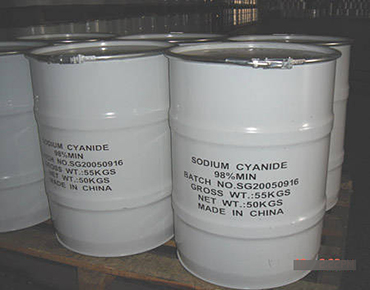- Our Location
- 17 Van Praagh Avenue,
Milton Park, Harare
- working hours
- Mon - Fri : 8:00 Am - 5:00 Pm
Our Products
Our Products
Sodium Cyanide
Cyanide is a naturally occurring chemical that is found in low concentrations throughout nature including in fruits, nuts, plants, and insects. It has been used by the mining industry to separate gold and silver particles from ore for over 120 years. With proper management, cyanide can be used safely and without harming the environment despite its toxicity.
Background information on cyanide
Cyanide is the general term for chemicals which contain a cyano group (triple-bonded carbon and nitrogen with the chemical formula CN) that occur naturally or are human-made in various forms.
Cyanide is also a useful industrial chemical. Over one million tonnes of it are used annually in electroplating, metal processing, the production of organic chemicals and plastics, and in photographic applications. The mining industry has used cyanide to process ore for more than 120 years and uses less than 20% of the global production of industrial cyanide.
Role of cyanide in ore processing
Cyanide, in the form of a very dilute sodium cyanide solution, is used to dissolve and separate gold from ore. Cyanide leaching is considered to be a much safer alternative to extraction with liquid mercury, which was previously the main method of removing gold from ore. Cyanide leaching has been the dominant gold extraction technology since the 1970s.The concentration of cyanide used in this process is normally in the range of 0.01% and 0.05% sodium cyanide (100 to 500 parts per million). As part of their best practices, mines use as little cyanide as possible for environmental, safety, and economic reasons. Cyanide leaching is usually done along with a physical process like milling, crushing, or gravity separation. The pH of the resulting slurry is raised by adding lime or another alkali to ensure that cyanide ions do not change into toxic cyanide gas (HCN). The gold is then further concentrated and reduced, before being smelted into gold bullion.
Cyanide toxicity and management
Cyanide is toxic in large doses and is strictly regulated in most jurisdictions worldwide to protect people, animals, and the aquatic environment. Cyanide prevents the body from taking up oxygen, resulting in suffocation, which may be fatal to humans and animals without prompt first aid treatment. However, people and animals can rapidly detoxify non-lethal amounts of cyanide without negative effects, and repeated small doses can be tolerated by many species.
In high concentrations, cyanide is toxic to aquatic life, especially fish which are one thousand times more sensitive to cyanide than humans. Because the greatest environmental threat from cyanide to aquatic life is from intentional or unintentional discharges into surface waters, water monitoring and water management on mine sites is very important. Regulations frequently limit the amount of cyanide which may be discharged into the environment, and there are a number of water treatment technologies available to remove cyanide from mine water.
Birds and other wildlife are also potentially at risk from cyanide poisoning if they are using tailings ponds for drinking or swimming. In order to prevent wildlife fatalities, cyanide levels in tailings ponds can be reduced to safe levels by minimizing the amount of cyanide used, removing cyanide in waste streams and recycling it, and by using chemical or biological reactions to convert the cyanide into less toxic chemicals.




